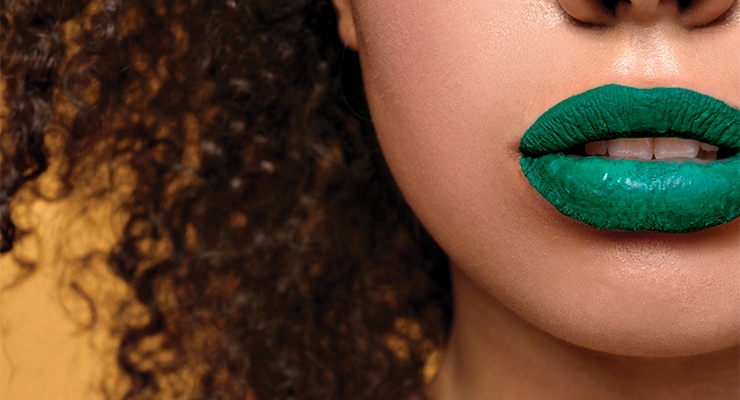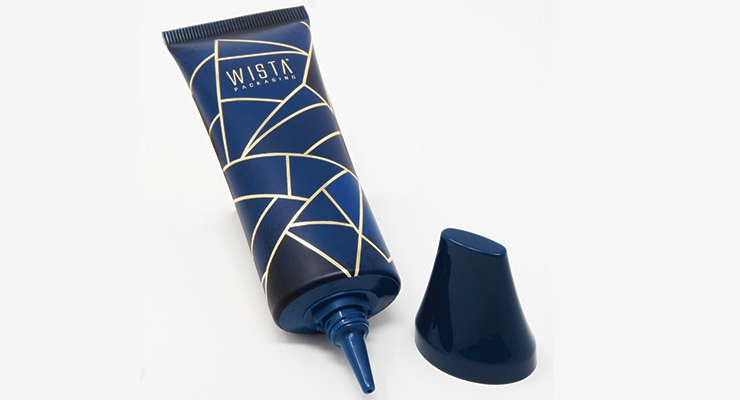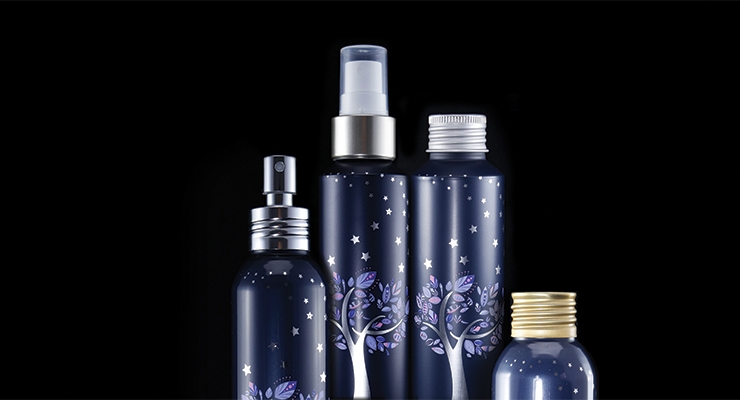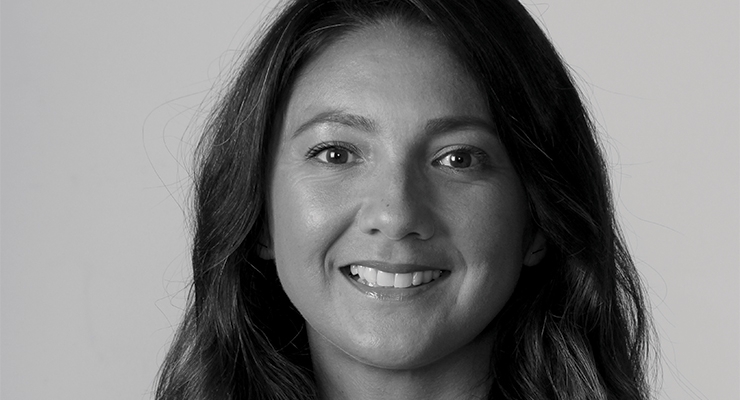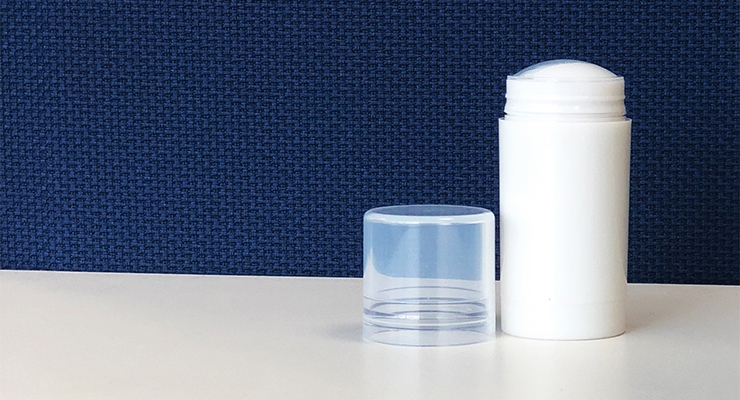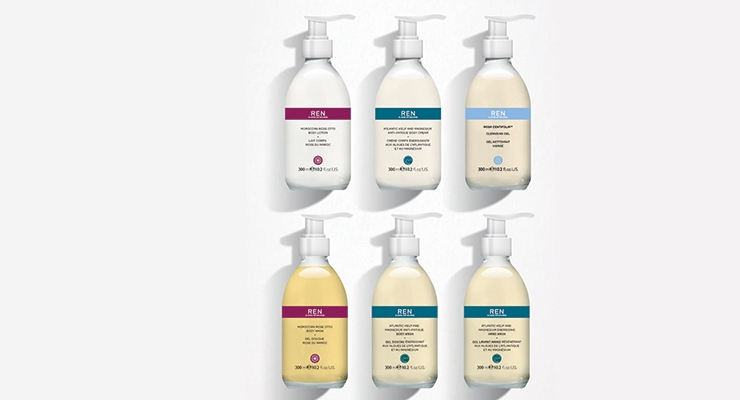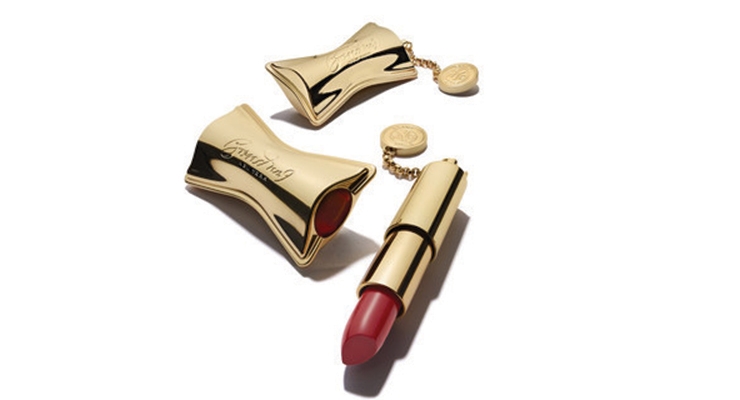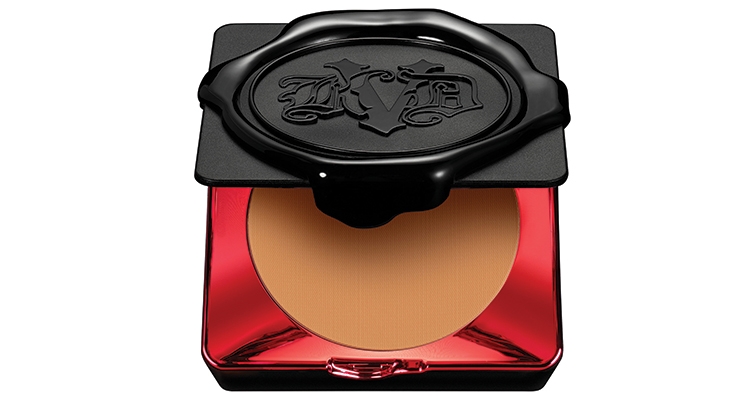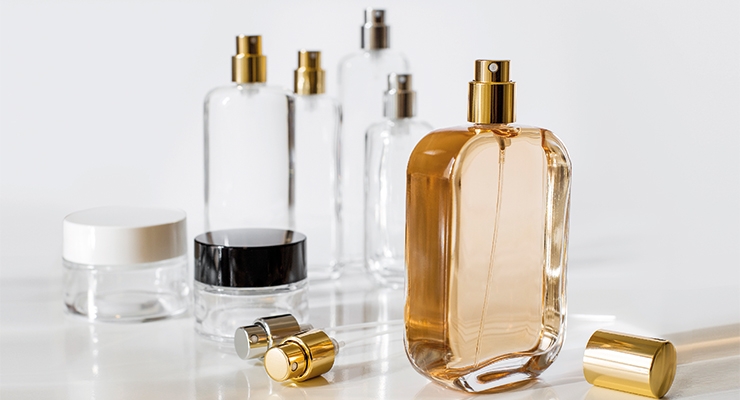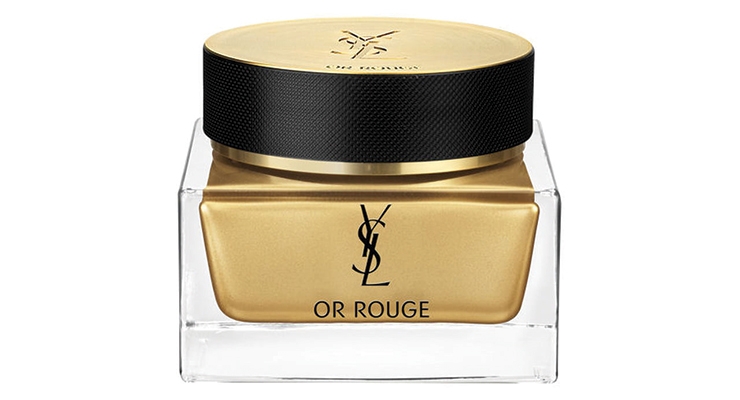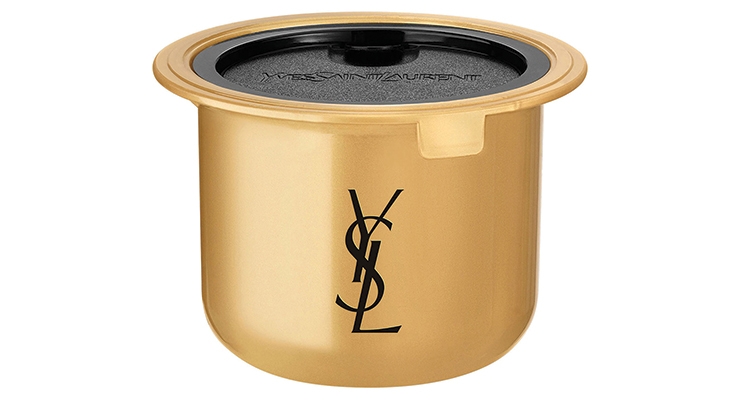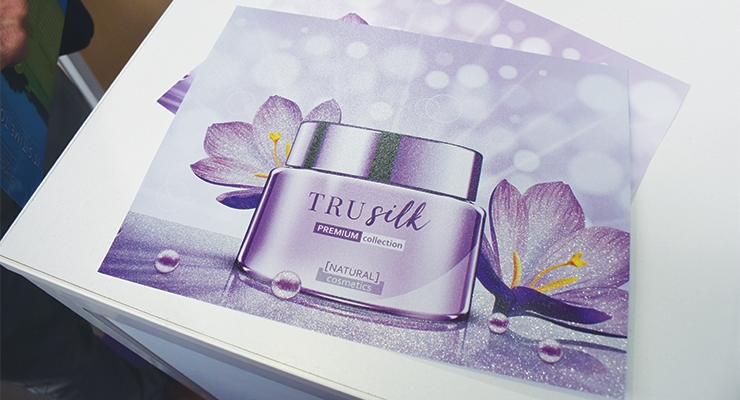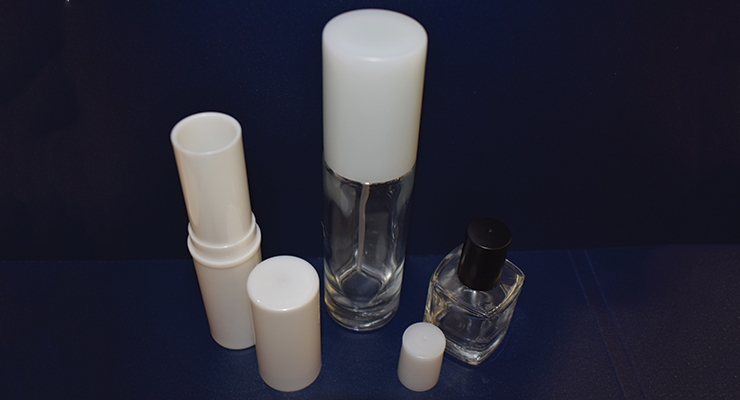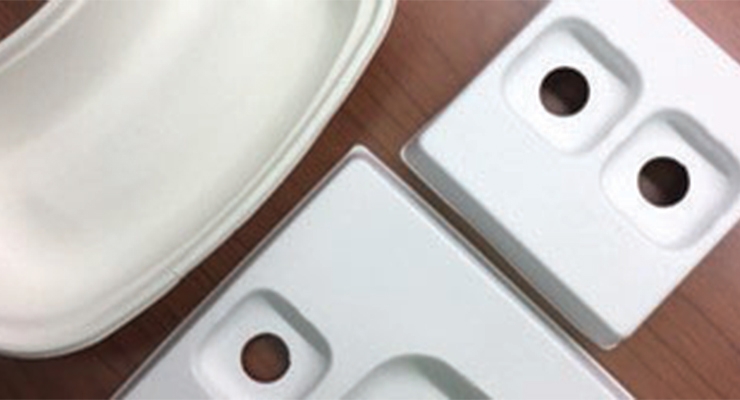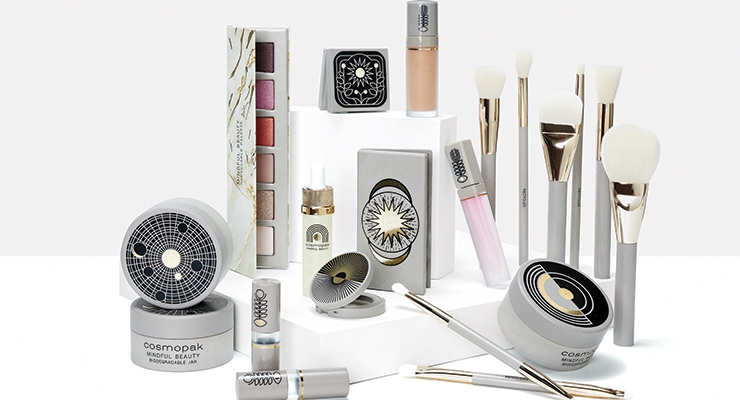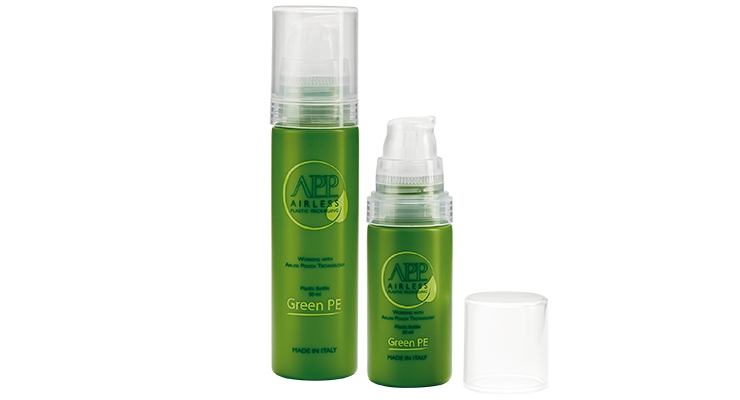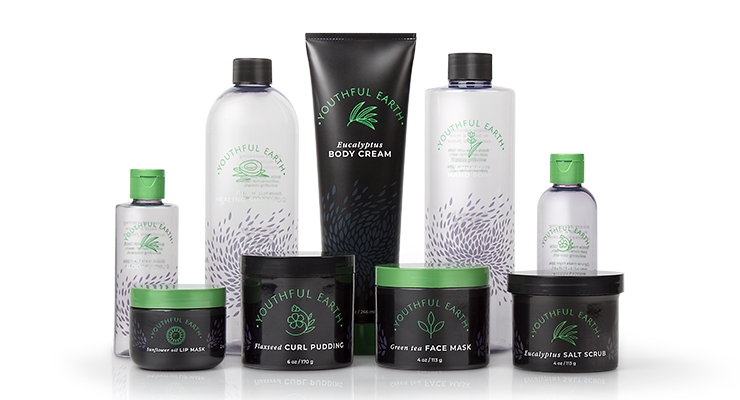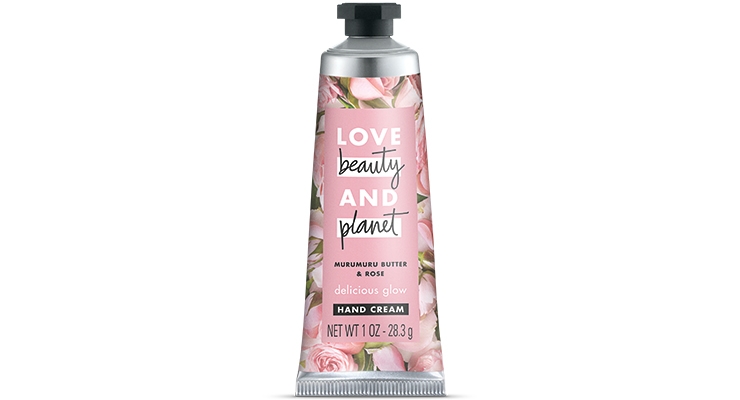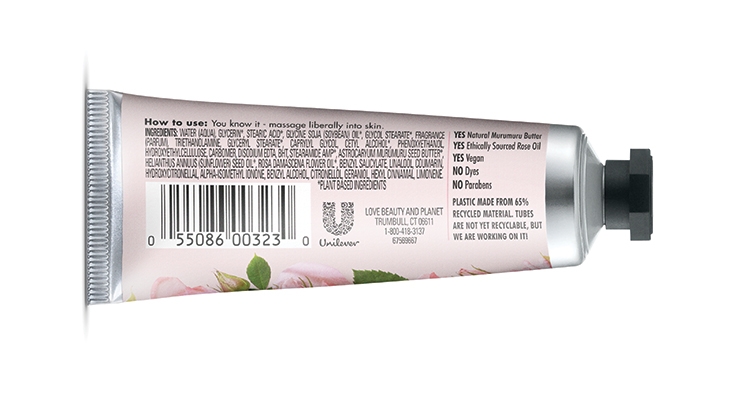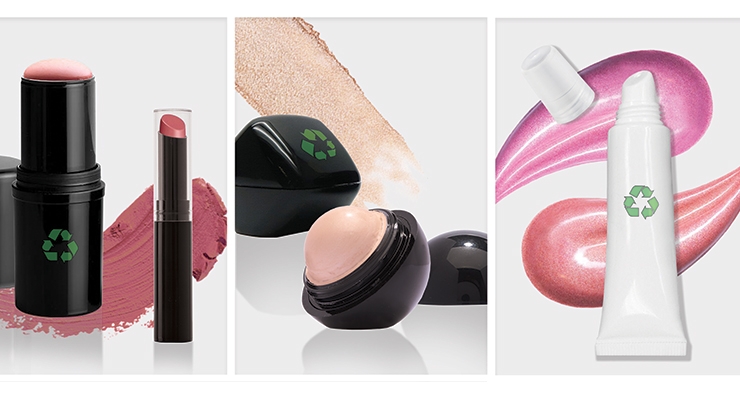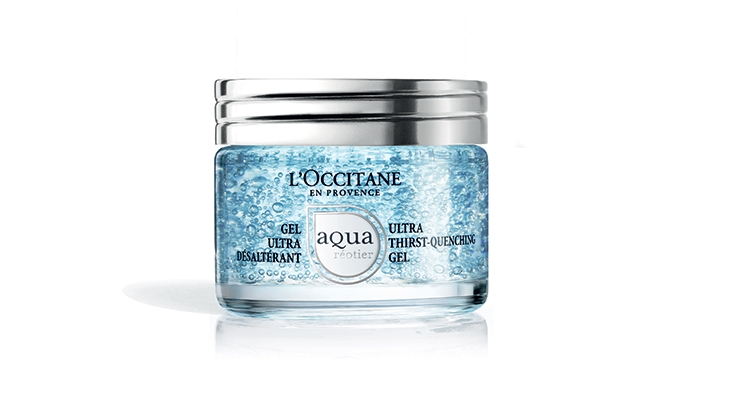Jamie Matusow, Editor-in-Chief04.30.19
Judging by the deluge of new ‘clean’ beauty product launches, zero-waste, circular economy and recyclability claims—and brand attendees’ focused interest at events of late, including Luxe Pack and MakeUp in LosAngeles and Cosmoprof Bologna—when it comes to cosmetics packaging, sustainability appears to be ‘the new black’ in the beauty industry. The trend among both brands and suppliers is to operate as a responsible beauty business, with a commitment to society and the environment.
The overzealous search by beauty (and other) brands, from global players to Indies built on eco-ethics, has unleashed a huge demand on suppliers to satisfy calls for eco-friendly packaging and processes—and it seems like nearly everyone has something to offer in this respect.
Michael Warford, director of sales at ABA Packaging Corp., tells Beauty Packaging: “Probably seven out of every 10 customers that visit our booth at the various shows that we participate in have eco-friendly packaging on the top of their to-do list.” He explains, “A large segment of our customer base, ranging from the very smallest entrepreneur to the largest multinational companies, have expressed a strong interest in finding primary packaging components for their new projects that are eco-friendly. Many of these customers have a personal interest and goal of moving forward with the most environmentally friendly primary packaging options. Others are being driven in this direction due to demands that are being put forward by their consumer base and the retailers.”
While the industry has been talking about sustainable packaging for decades, the past few years have seen monumental actions taken, especially in Europe. In many cases, global brands have led the way, pledging major commitments by 2025 for recycling, reduction, reuse, incorporation of post-consumer materials, lowering carbon footprints and the like. A number of companies are also appealing to consumers’ sense of ‘doing good,’ and Corporate Social Responsibility (CSR) is also a hot topic, with both brands and suppliers publicizing their corporate philosophies, as well as practices, spelling out internal policies from employee benefits packages, to manufacturing-based energy solutions.
Albéa’s Gilles Swyngedauw, vice president, marketing, innovation and sustainability at Albéa, says, “Consumers are driving the demand for eco-designed packaging. They are increasingly becoming aware of the impact of their actions—what they buy, what they apply on their skin, what they eat—and they’re craving cleaner options and product packaging is one of them.
Cosmetic brands take real actions to provide consumers with what they need, and develop more and more environmentally friendly product and packaging with their suppliers.”
“There’s been a change in attitude toward sustainable packaging,” says Flavio Unikowsky, international business manager, Wista Packaging. “In the past,” he says, “eco-friendly packaging has been a ‘nice idea,’ but recently we have seen brands being more deliberate in their discussions in this area. The easiest way to think of this is that it used to be a ‘nice-to-have’ and now the conversation is turning into a ‘must-have’ during the development process. What we saw as a trend from a smaller group of brands servicing a more ‘niche’ market, has turned into a movement that all brands are now requesting.” What caused the change? Unikowsky points to social awareness. “We see brands searching for a way toward more meaningful sustainable packaging solutions. The demand is on brands to upgrade or align their packaging with consumer expectations.”
Much of the impetus stems from Europe. At Hoffmann Neopac AG, Cornelia Schmid, marketing manager, points out, “Since the European law has changed and set goals on recycled plastics packaging by 2025, many of our brand customers have set their own goals for packaging sourcing. Each brand has its own goals and perception of eco-friendliness they focus on. Therefore, Neopac has covered the five “main drivers” in its EcoDesign Tube Concept: reduced material, recycled content, bio-based material, designed for recyclability and product safety.
Neopac’s Picea tube is comprised primarily of a combination of spruce waste and a plastic matrix of sugar-based raw materials made exclusively for them. In total, the tube is composed of 95.8% renewable materials. Notably, the International Organization for Standardization’s (ISO) CO2 footprint analysis revealed that the Picea wood tube uses up to 38.9% less CO2 in its life-cycle than a traditional polyethylene (PE) tube. Other benefits of the Picea tube include easy printability, recyclable capabilities, and similar barrier properties compared to PE or low-density polyethylene (LDPE) tubes. It has also attained Ecocert and Cosmos certifications, as well as EU Food Grade status.
Continuing the Discussion
The ultimate goal of sustainable packaging is to benefit society and the Earth—and to provide brands with a compelling story to share with their customers who are expressing strong interest in conscientious, eco-friendly purchases. But while many brands have good intentions, the realities of what’s possible and what’s not are often complicated, due to issues such as cost, protection, formulation compatibility, a luxe image and shipping, not to mention the confusion surrounding the many sustainable packaging components that are now offered. Suppliers say that one of their primary responsibilities has become educating their clients in the various options.
ABA’s Warford says they often help to guide customers from the basics to the specifics: “First and foremost, any and all primary packaging options that offer an eco-friendly advantage must pass the litmus test for product containment, product protection, product compatibility, and efficacy in application.” He says the larger brands that have strong engineering support are aware of these basic packaging requirements and they factor them in on all of their searches. “The small brands and entrepreneurs need guidance in this area and our support teams work to help them to find viable options to meet their goals. We are able to offer them primary packaging options in glass, plastic, and metal that offer eco-friendly advantages.”
But things can change on a dime. Just when it looks like progress is being made toward recycling, which has become almost commonplace—wham! China restricts purchases of recyclable materials.
Where will the sustainable packaging answers come from? It looks like solutions may incorporate more of the other R’s—reusables and refillables—as well as biodegradable materials and new strategies. Always a resourceful industry, cosmetic packaging suppliers have engineered a strong variety of options for brands. Internally, while not every manufacturer has the ability to instantly go zero-waste, many are working to improve (or continue) their operations in a responsible way, thus adding to a brand’s compelling sustainability story.
Packaging: Changes and New Solutions Lie Ahead
Global research points to the changes taking place. Market analysts at Research and Markets report that the global cosmetic packaging market is expected to reach $3,980.81 million by 2026 growing at a CAGR of 5.9% during 2018 to 2026. While the major primary packaging materials considered within the scope of the study primarily include plastic, metal and glass, the organization says changes in materials used may lie ahead. According to the study findings, “Vendors have been observed to move toward adopting recyclable and eco-friendly packaging products due to growing environmental concerns among the consumers.” The research group also noted the quandary that’s been plaguing the use of greener materials for some time: “However, fluctuations in raw material prices are restraining the market growth.”
But challenging as the situation is, there may not be a choice but to conform. According to a recent Mintel report, titled, Sub-Zero Waste: 2019 Global Beauty and Personal Care Trend, “If brands don’t change their approach now, they won’t exist in the future.
Beauty and personal care businesses must switch to a whole new paradigm in terms of sustainability and zero waste. Some companies are already discussing totally circumventing packaging. This is not just a trend, it is a movement. Gaining the first-mover advantage is key. The companies that put current profits ahead of investment in zero waste solutions will lose out in the long term. Indie brands already have an edge, as they have built their business practices around ethics. High-profit BPC brands that aren’t investing in this area are already condemning themselves.”
Ray Lewis, president/owner, Nate Packaging, concurs: “The consumers are becoming savvier to the green environment movement that is further emphasized by the agendas of our politicians. With all this said, the brands are being forced to consider this growing market share of consumers as this begins to take away bottom-line sales for non-sustainable products to their competitive sustainable brands if they do not address this growing trend among consumers.”
What are the challenges faced by the necessity of packaging, but the dilemma of disposal? What can brands do now and going forward?
According to Sarah Jindal, senior global analyst, Innovation and Insights, Beauty & Personal Care, Mintel: “The primary focus at the moment with regard to making big changes is what to do about packaging. We’ve seen some interesting innovations with refillable and repurpose-able packaging as well as brands going packaging free (Lush), but none of these have seen widespread adoption up to this point. I think the biggest challenge will be economies of scale and also getting the consumer to adopt new behaviors.”
Just as there have been huge investments in clean and green brands, there has also been a show of firms interested in problem-solving. Thus, “Brands also have the opportunity to invest in the myriad start-up companies that are working on unique and sustainable alternatives to plastic packaging,” says Jindal. “There is so much activity in this sector—and an infusion of capital, as well as a partnership with a major brand, could bring some of that technology to fruition making it more cost-effective across a wider base of brands both large and small.”
The other area where Jindal says we are starting to see more conversation is in “the shift from green to blue.” Rather than just thinking in terms of not contributing to the problem, she explains, “Many are thinking about ways they can actually create products and processes that help to reverse the problem. AirCarbon, for example, is a new process created by Newlight Technologies that uses greenhouse gases to create biopolymer materials. This represents just one of the many interesting advances we’re seeing.”
Getting an Eco-Message Across
Enoch Palmer, creative director at Case Agency, and a former design director at Aveda, tells Beauty Packaging they are seeing an increasing number of beauty brands trying to get an eco-message across, regarding their packaging.
“It is becoming the cost-of-entry for all brands as both consumers and retailers are looking for sustainability in packaging,” says Palmer. “Consumers want more than just messaging though and are searching for companies that are actually looking at the whole process differently to reduce packaging waste.”
Are brands re-designing their packaging in thoughtful ways?
“Yes,” says Palmer. “They are looking at everything from removing plastic from boxes, to making those boxes more easily recyclable to even questioning whether those boxes are needed in the first place. With Aveda, we designed refillable lipsticks that offered the consumer the ability to refill without throwing away the entire package. Less packaging, done thoughtfully can have the added benefit of making the product more ‘Instagram-able’ and social media friendly, too.”
Reusable/Refillables
While a number of brands, mostly upscale, have promoted reusable packaging for years, it’s been difficult to create a widespread initiative. Now a collaboration between a number of global brands hopes to change this.
Billed as “The Future of Consumption,” Loop, a reusable packaging model announced at the beginning of 2019, is supported by more than 20 partners, including multinational consumer packaged goods companies Nestlé, Coca-Cola, Procter & Gamble and Unilever—along with international recycling leader TerraCycle.
Jindal remarks, “Unilever’s Loop is one initiative I’m very excited about as it brings product to the consumer’s doorstep in reusable packaging that is then collected once the product is used up. This represents not just a new packaging approach but a new model for serving the consumer with the products they use day to day.”
The new business model features premium durable packaging that is delivered directly to the consumer, returned and refilled. Unilever signed on to trial nine of its brands, including, in the Beauty space, premium brand REN Clean Skincare and Love, Beauty and Planet, in new reusable packaging made from aluminum and glass.
Bond No. 9, for its first launch in Color Cosmetics, a lipstick, made an eco-statement. Each New York Lips shade comes in an elegant refillable gold case inspired by Bond’s iconic hourglass bottle.
Early this year, Kat Von D Beauty launched its 100% vegan and cruelty-free Lock-It Powder Foundation in a “sexy refillable compact accented by a pop of red metallic on the inside.”
On the supplier side, Gilda Mirra Cutri, VP of operations and business development, Coverpla, says brands are requesting bottles and skincare packaging that are environmentally friendly and refillable to decrease the amount of waste their product creates as a whole. She says Coverpla’s Eco Line is created “to accommodate the needs of customers who want products to leave less of a footprint on our environment.” The supplier’s Verdi Bottle is made with less glass and is refillable.
Albéa’s Swyngedauw says Spirale their latest innovation in perfume pumps, can be unscrewed to make the bottle both refillable and recyclable. Its carbon footprint is thus reduced by 21% compared to a standard metal screw-pump.
The first packaging supplier to sign the New Plastics Economy Global Commitment from the Ellen McArthur Foundation, Albéa has pledged to make 100% of their plastic packaging reusable or recyclable by 2025. “The challenge today,” says Swyngedauw, “is to develop an efficient circular economy in the beauty and personal care sector. And Albéa is working closely with its ecosystem to rethink the value chain, through a circular economy, by recycling, reducing and reusing.”
For example, when it comes to “reducing,” Albéa says its Thin-Wall Sleeve+ Slim Cap is the lightest tube on the market; total weight is reduced by 33% compared to a “standard” tube. Thus, Swyngedauw says, “The production of one million Slim Caps + Thin-Wall tubes would prevent 36 tons of CO2 from being emitted into the air, the equivalent of 36 round-trip flights from Paris to New York for one person.”
Recently, Albéa manufactured the refillable and eco-designed packaging of Yves Saint Laurent Or Rouge. As part of a sustainable approach, in line with YSL’s commitment, Or Rouge was designed as a luxurious refillable and recyclable case. The packaging features a textured cap with a brushed gold finish, and the YSL logo embossed on the top. The package received a PCD Paris Award 2019 in the Skin Care Premium—Refillable category. The removable and replaceable refill is housed inside the case of Or Rouge La Crème.
ABA’s primary packaging options in glass, plastic, and metal provide a wide range of eco-friendly solutions. Warford says glass continues to be a strong option due to its high level of recyclability and established recycled material waste streams.
“In plastics,” he says, “We can offer tubes, bottles, and jars that contain certified Post Consumer Recycled (PCR) materials up to 100% in many cases.” In recent years, he says, ABA has focused their efforts and resources toward promoting aluminum metal packaging as an eco-friendly option. “ABA has partnered with great manufacturing partners to offer highly decorated aluminum bottles and cans, one-piece threaded caps, and completely sealable jar packages,” says Warford. He explains further: “Aluminum is a sustainable material and it is 100% recyclable. In fact, aluminum can be endlessly reprocessed and reformed without any loss of the metal quality. The recycling process for aluminum uses only 5% of the energy required for primary production. For years the worldwide demand for recycled aluminum has by far exceeded supply. Aluminum is lightweight which equates to lower costs for transportation which adds to a lower carbon footprint.”
Recyclable Papers Rule
Harmony Paper Company’s Diamond Print Glitter claims to be the world’s only full line of printable glitter papers and films. The company’s exclusive, patented manufacturing process creates a 100% shed-free, recyclable glitter paper yielding almost 90% pulp recovery. Anthony Grinnell, CEO, says Diamond Print Glitter runs extremely well through any printing press, allowing spot glitter effects without the hassle and waste of UV glitter and off-line applications.
With consumers spending so much time shopping and ordering online, Inger Heinke, business development director, BillerudKorsnäs—which was named “The most sustainable packaging company in the world” according to the Dow Jones Sustainability Index 2018—observes, “E-commerce makes recycling a major consumer priority.” She says it is important to have strong virgin fiber boards in the recycling system. “Increased sophistication in sustainability strategies at brands leads to more focus on carbon footprint,” explains Heinke, “and not just adding random percentages of recycled content, which is not necessarily beneficial to the environment, and takes away from the aesthetic and performance (strength) of the packaging.”
BillerudKorsnäs focuses on light weighting, using lower weight materials, which is enabled by new board-making technology, says Heinke. She explains, “This enables brands to reduce packaging materials overall, while maintaining the strength and stiffness critical to protecting the goods inside.”
What are brands requesting as far as sustainable packaging and practices? “Increased transparency on all aspects of environmental performance from their suppliers,” says Heinke. In addition, chain of custody forest certification (eg, FSC or PEFC), air and water emissions and greenhouse gas emissions including the specific CO2 associated with the products they are using—and innovation with recyclable and biodegradable products which can replace plastic used in packaging.
Biodegradable Materials
There’s been steady news of biodegradable solutions that show packaging promise. Possible plastic replacements have been reported using materials from crustacean shells to avocado pits. Alternative no-waste solutions involve turning plastic bottles into textiles in the fashion industry.
Baralan has put an emphasis on biodegradable material. Now in validation process, not yet in production, Roland Baranes, CEO, told Beauty Packaging: “It has great potential.” The versatile material can be used for three different products: a stick package, a cap and an overpump. What’s more, Baralan can use existing molds to produce the parts, as well as biodegradable colors for customization.
Lombardi Design & Mfg. has launched a new capability in biodegradable pulp molding. Jack Albanese, director of new business development, says, “We are creating sustainable packaging for the Beauty sector that is environmentally safe, using natural fibers. The primary materials for all of our molded pulp products are environmentally friendly and sustainable, significantly lessening their impact on the environment.” Lombardi is also working on developing biodegradable printed laminate coatings to make products water-, oil-, and alcohol-proof—while maintaining an attractively decorated package.
At Cosmopak, Syeira Simon, product development and formula innovation manager, says more of their clients are asking for “ocean safe plastics” and plastic made from recycled materials. Responding to demand, Cosmopak introduced a new line of turnkey eco-friendly cosmetic products. Their formula innovations are focused around CBD, hemp seed, crystal geodes and clean ingredient lists. The new offering is presented in biodegradable packaging options, post-consumer-recycled plastics, recyclable paper palettes, and recycled bags and brushes.
Simon adds, “Cosmopak and our suppliers are held to high environmental standards in line with the needs of customers, FSC certification, a focus on reuse and recycling of raw materials, strict compliance with all local laws and regulations, and ISO 9001 certification.
Luxury meets sustainability at Golden Arrow, in the form of wet-press molded fiber trays and sustainable packaging.
“Gaining momentum in sustainable packaging is the creation of the unique unboxing customer experience,” explains Jenda Chen, managing director. “From the moment a package lands in the customer’s hands, the journey with the brand begins. The design captures the brand’s unique voice, but the packaging must also provide comparable structural support and uncompromised quality. Brands desire brilliant colors and, at Golden Arrow, our bright and vibrant color selection redefines the meaning of sustainable packaging and environmental responsibility. Alongside the quality of the packaging, brands ask to see an accessible supply chain that can meet their specific packaging needs worldwide. “A green production process from start to finish is non-negotiable for many of our clients,” says Chen.
Golden Arrow’s Rugosa cosmetic prototype package in their Jasmine series features 100% biodegradable packaging based on colorful molded fiber trays—made of a combination of fast-growing bamboo and a sugarcane by-product called bagasse—soy-based ink, and “an unmatched touch and feel” through their proprietary manufacturing process.
ICS’s newest innovation is their patented Bio Form, a versatile, sustainable material that not only can be used for custom injected primary packaging, but also for custom-injected packing materials such as carton dividers, layer trays and other B2B shipment needs. Susanne Nichols, CEO, explains: “Bio Form is the epitome of mindful beauty as it is a fully biodegradable, compostable natural food-based alternative to petrochemical derived plastic materials.”
Green PE, PET, R-PET, PCR
Emanuele Mazzei, CEO Lumson USA, says, “Lumson is sensitive to the environment and our responsibility to packaging that will contribute to a greener more sustainable world.” To this point, the supplier has embarked on a series of initiatives, both internal and with external partners, that are addressing the importance of sustainable packaging in terms of components, raw materials, industrial applications and more.
“We have noticed that, especially the larger brands and global brands, but also the niche start-up companies, are incorporating the environment into their approach, as a main pillar of their organization’s credo; and this is of course also due to the changing consumer habits and collective awareness that is now mainstream,” comments Mazzei.
Mazzei says Lumson already has the flexibility of manufacturing their plastic bottle lines in R-PET which is 100% recyclable, and Green PE coming from ethanol sugarcane, cutting out usage of fossil sourced raw material. “We’re looking at alternative polymers and other industrial applications that will offer options and make the difference to our customers.”
Wista Packaging, based in Brazil, is totally vertically integrated from molding to decoration, says Unikowsky. Brazil is the main producer of the sugarcane-based resin made from ethanol, known as Green PE. The sugarcane ethanol plantation occupies only 1.4% of the Brazilian arable area and does not compete with the food crops.
What are brands specifically requesting as far as sustainable packaging and practices? Wista’s Unikowsky says brands are receptive to sustainability solutions where metrics can be provided to help measure the environmental benefits. Take for example carbon reduction goals. He says that Wista can now supply packaging using plant-based materials that will reduce a brand’s carbon footprint. The Wista airless systems focus on optimal protection and dispensing of the formula using the least possible material. “At the same time,” he says, “we are using the highest possible content of plant-based resin, renewable materials in every package we manufacture.”
Nate Packaging’s Lewis says brands are looking for products that have a sustainable footprint through use of PCR, bio-resins, CO2 reductions, and reduction to landfills. One-material packaging is driving the market now as to be able to recycle the packages once the customer has used the product.
Nate Packaging has expanded its stock lines to help more brands become more sustainable. Lewis describes a new package they’re offering, which he says is “revolutionary for sustainability as stick products are a growing market.” Nate has developed an airtight 30ml bottom-fill or top-fill stick in all PP which allows them to put up to 100% PCR in the stick. “Customers are now able to formulate in water and alcohol-based formulas as there is no weight loss of the product to improve on storage and product shelf life while being sustainable,” he explains.
At Berry Global, Inc., Rebecca Vara, sales vice president, beauty and personal care, says, “We are seeing a growing interest in sustainable packaging from brands, and are finding that one solution doesn’t fit all.” She says the addition of PCR is a recurring ask and there is an array of branding, manufacturing, and processing inputs that determine whether a brand ultimately decides to use 25% PCR content, 75%, or even 100%. To help brands navigate through these options and achieve their sustainability goals, Berry has developed a Good, Better, Best matrix for tubes which illustrates how brands can achieve different levels of PCR content by mixing and matching different options. By adding tubes and closures with varying PCR levels, brands can achieve a product made from fully recycled material. She explains, “With dozens of options and percentages, we make it simple to understand and choose the options that fit the brand and manufacturing needs.”
Verdant, a recent introduction from Berry, is a full line of bottles, tubes, jars and closures with PCR content percentages ranging from 25% to 100%—and the company is continuously working to improve those numbers. In addition to Verdant, Berry also offers the ability to provide fully recyclable options in all packaging formats, with the same decorating options. Stock and custom product lines are available in PET, HDPE and PP resins, color matched to the customer’s preference. Decorating options include soft touch, registered embossing, silk screen, hot stamping, cold foil and premium flexographic printing.
Customers of Viva IML Tubes “are clearly showing a growing interest for fully recyclable tube solutions as well as tube solutions with the highest PCR content,” according to Bruno Lebeault, marketing director Americas. Viva’s injection molded tube with In Mold Label is 100% PP, 100% recyclable, without separating the cap from the tube and they are able to include up to 65% PCR. Lebeault adds: “Many Millennials feel passionately about recycling, sustainability, and being eco-conscious, so we wanted to create a brand that has this same mindset.”
Viva partnered with Unilever to develop their Love, Beauty and Planet 1-oz. hand lotion. The tube and cap are 100% PP and include 65% PCR.
Kelly Baldwin, associate brand manager, Love Beauty & Planet, comments: “Our brand is all about sustainability and small acts of love for our planet. Our other bottles and jars are made from 100% PCR, so it was really important for us to push the limits with the hand cream tube and get the highest percentage of PCR possible. Viva worked with us over the course of several renditions to get the perfect tube, shoulder and cap that we wanted to bring our hand cream vision to life. We’re also very pleased that we were able to get to 65% PCR as this is quite high for tubes. The 65% PCR content is noted right on the back of the tube, along with an explanation.
Nichols, of ICS, says that environmentally responsible packaging and practices in the beauty world is a topic that ICS is passionate about.
She tells Beauty Packaging: “We have continued to see a growing trend in ‘mindful beauty’ as consumers continue to become more aware of the environmental processes behind their cosmetics and cosmetic packaging. Consumers want to engage with brands that not only create good-looking beauty products, but also want these brands to be in line with their personal values and new eco-friendly habits.” She says this demand is targeting all types of brands ranging from the mass market to masstige to premium brands. As a result, Nichols says they have seen a sharp growth in demand and interest from brands to incorporate such eco-friendly options in their primary packaging. “PCR plastic in particular has become increasingly popular,” she says, adding, “at ICS we have been using PCR for almost two decades, using certified PCR suppliers, available with food contact certification.” Available PCR options include a variety of compacts, palettes, sticks and tubes, in various resins and various percentages of PCR depending on the brands’ needs.
The trend in mindful beauty also extends to packing materials, says Nichols, “as brands are increasingly monitoring their global consumption of packing materials in order to reduce their carbon footprint.” She says ICS has been implementing these eco-friendly practices by utilizing recycled paper for shipping cartons and reducing shipping and packing waste whenever possible.
New Alternatives
As Mintel’s Jindal stated, future packaging possibilities may lie with start-up companies that are working on new alternatives.
In February, L’Occitane en Provence signed a multi-year supply agreement deal with Loop Industries (different from the LOOP program mentioned previously), described as a leading technology innovator in sustainable plastic, as a key supplier of 100% recycled virgin-quality PET plastic.
By incorporating Loop-branded PET into its packaging, L’Occitane says it will achieve its goal of using 100% recycled plastic in L’Occitane en Provence bottles by 2025, and place the Loop logo—a confirmation for consumers that the plastic is sustainable—on all packaging containing Loop PET plastic.
According to L’Occitane, as the demand for sustainable packaging solutions continues to grow, Loop Industries has emerged with “transformational upcycling technology” that allows plastic bottles and packaging, carpet and polyester textile of any color, transparency or condition and even ocean plastics that have been degraded by the sun and salt, to provide brand owners a sustainable plastic product that helps solve the plastic pollution problem and meets FDA requirements for use in food-grade packaging.
In March, PureCycle Technologies announced a partnership with global industrial manufacturer, Milliken & Company, and the world’s largest food and beverage company, Nestlé S.A., as it moves forward with plans to open its first plant to restore used polypropylene (PP) plastic to “virgin-like” quality with a “revolutionary” recycling method, that could also impact personal care.
PureCycle’s patented recycling process, developed and licensed by Procter & Gamble, separates color, odor and other contaminants from plastic waste feedstock to transform it into virgin-like resin. Milliken, whose additives will play a critical role in reinvigorating recycled polypropylene, has formed an exclusive supply relationship with PureCycle to help solve the plastics end-of-life challenge. Nestlé is working with PureCycle to develop new packaging materials that help avoid plastic waste, in line with the company’s commitment to make 100% of its packaging recyclable or reusable by 2025. PureCycle’s technology supports P&G’s vision of using 100% recycled or renewable materials and having zero consumer waste go to landfills.
A Focus on CSR
As noted, Corporate Social Responsibility (CSR) has become an important factor in brands determining which partners they want to use and the story they can tell.
Lumson’s Mazzei says CSR has been at the forefront at Lumson for some time and they’ve been awarded a Silver Medal in this regard from Ecovadis, as it pertains to the Environment, Labor & Human Rights, Ethics and Sustainable Procurement. Mazzei adds: “Our mission is for the long term, and we take great pride in the value this offers our customers.”
Anisa International’s Tianjin facility also takes its CSR and environmental responsibility very seriously. At the center of their global employee culture is honor, respect, and commitment to excellence, including a 90% women workforce and 100% compliance with fair practice standards and competitive pay. Anisa Tianjin uses 100% synthetic fibers in their products based on their commitment to stay cruelty-free, paraben-free, sulfate-free, AZO-free; claim 20% reduced landfill waste; offer clean, bio-friendly, and recycled packaging options; and offer 100% transparency for reduced carbon footprint planning.
Eco-Packaging: What Lies Ahead
In addition to satisfying consumer demands for a healthier society and planet, has it come to the point where eco-packaging also means business growth? For both small and large brands?
Palmer, of the Case Agency, says, undeniably yes. “Consumers (especially Millennials and Gen-Z) are expecting and favoring brands that are embracing eco-packaging. Successful brands are finding ways to meet those expectations in ways that both save money and build brands. At the end of the day, when designers and brands find creative ways to use less materials and make their packaging re-usable, they can drive sales, save money, and protect the environment.”
Beauty Packaging asked Sarah Jindal, senior global analyst, Innovation and Insights, Beauty & Personal Care, Mintel, and Enoch Palmer, creative director at Case Agency, and a former design director at Aveda: What would you suggest to a brand about making an eco-impact with their packaging?
Palmer says, “When I was the design director at Aveda, we developed a series of simple questions that helped all designers and engineers think through ways of making packaging more sustainable. The questions started with “Do we need it?” and then ranged from “Can it be smaller, lighter, or made from fewer materials?” all the way to questioning whether materials could be sourced locally, from an environmentally responsible company, from recycled materials, etc. It was really helpful to introduce some discipline into the process that helped designers and marketers focus on the things that can make the most difference.”
Jindal replies, “Education will be the biggest area where brands can really step in to help streamline new usage or new processes for the consumer. For example, Garnier’s partnership with TerraCycle is a great example where the brand is educating the consumer on how to properly recycle their plastic packaging.” (TerraCycle and Garnier have partnered on a free recycling program for hair care, skincare, and cosmetic product packaging, as well as a fundraising opportunity for participants.)

